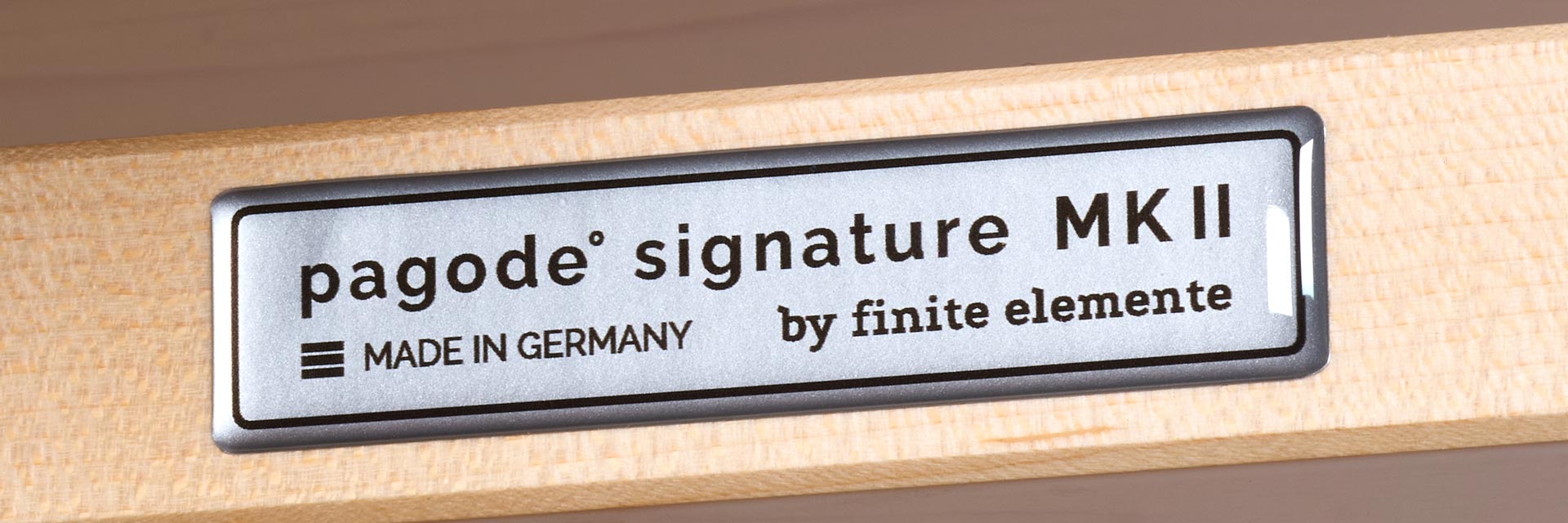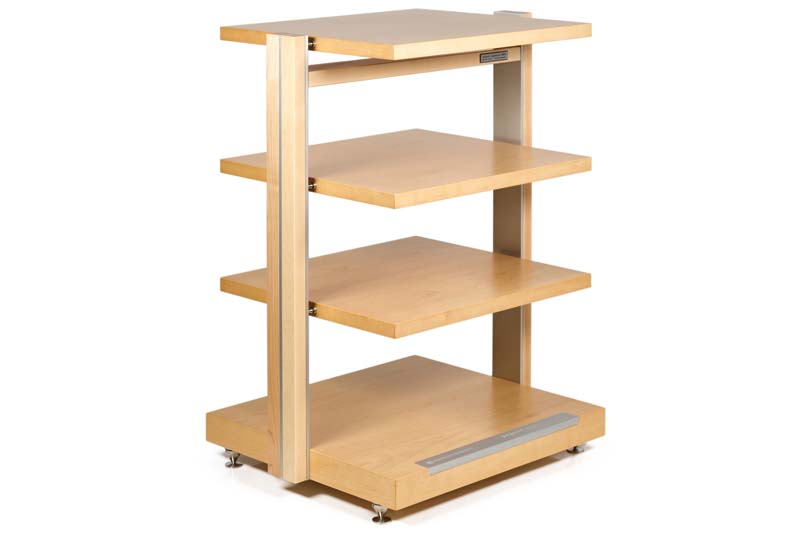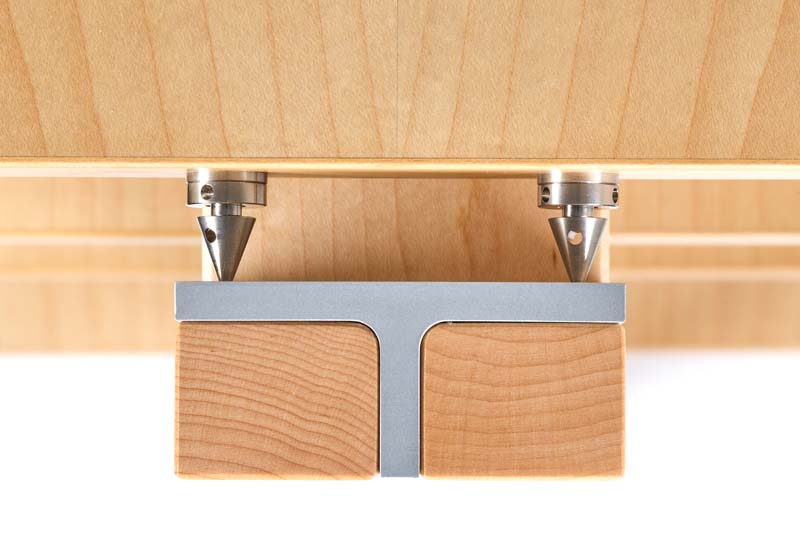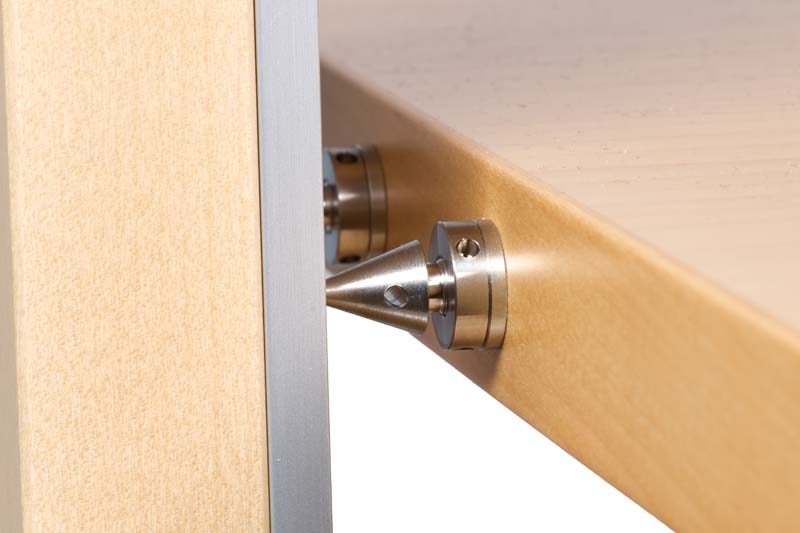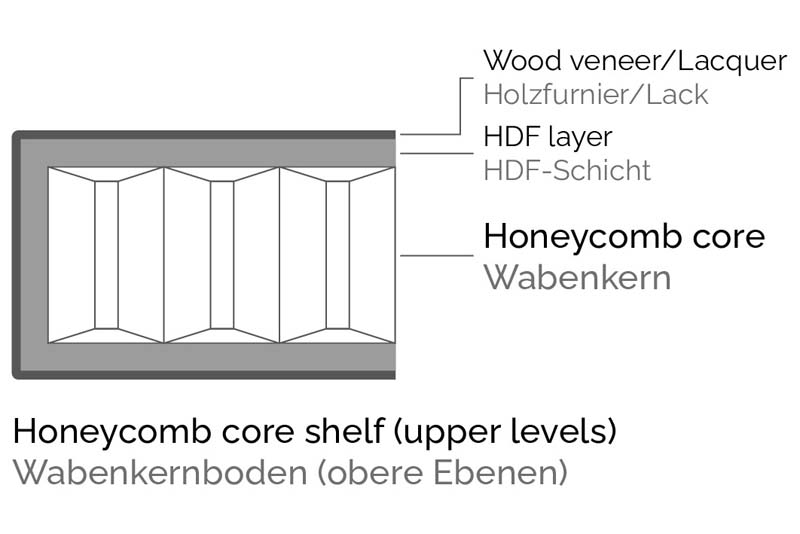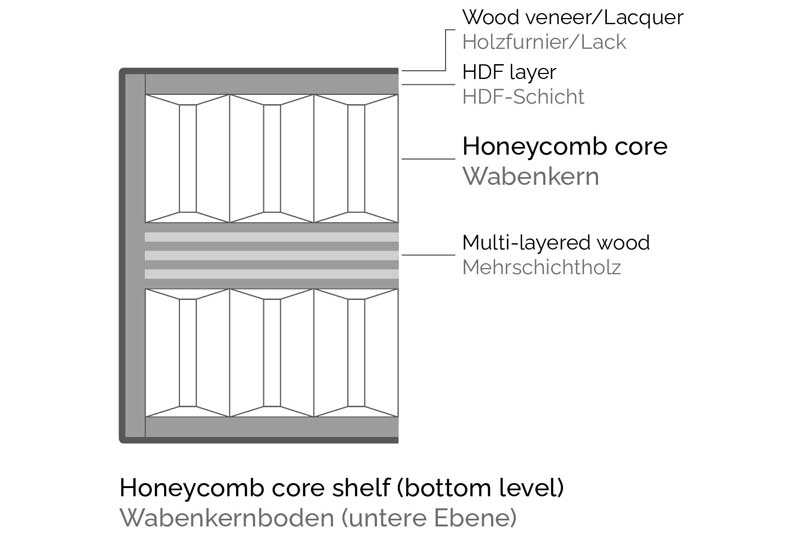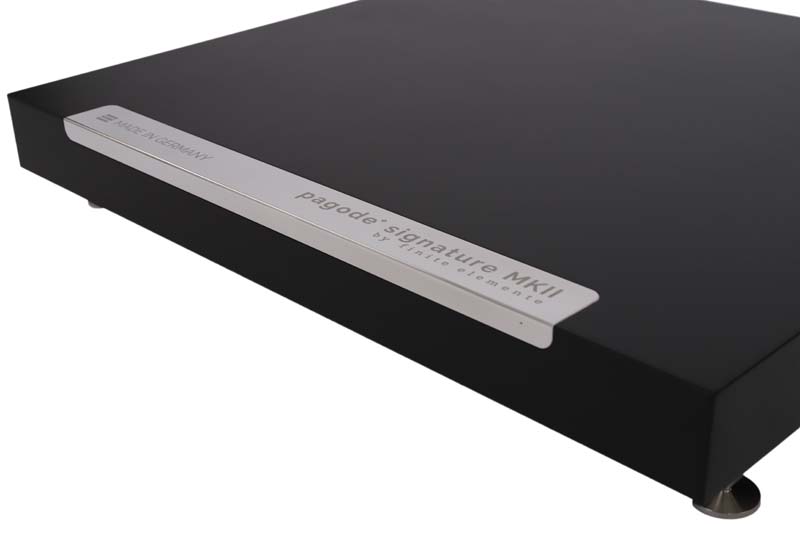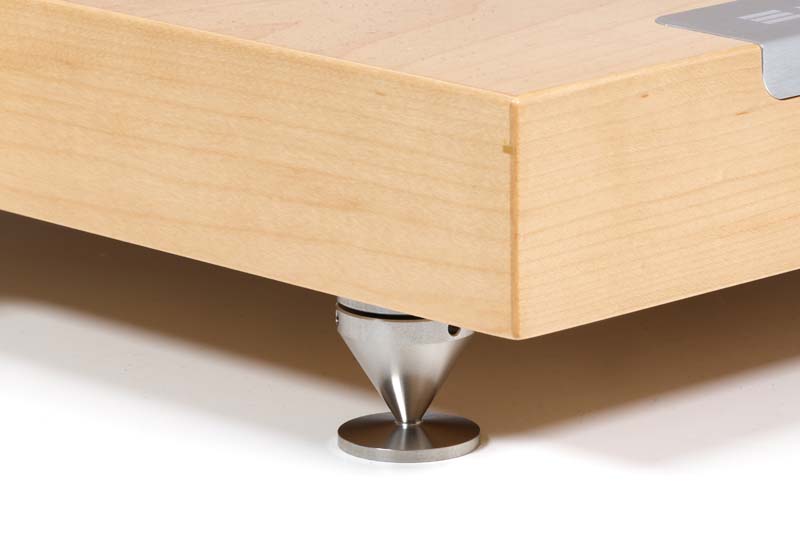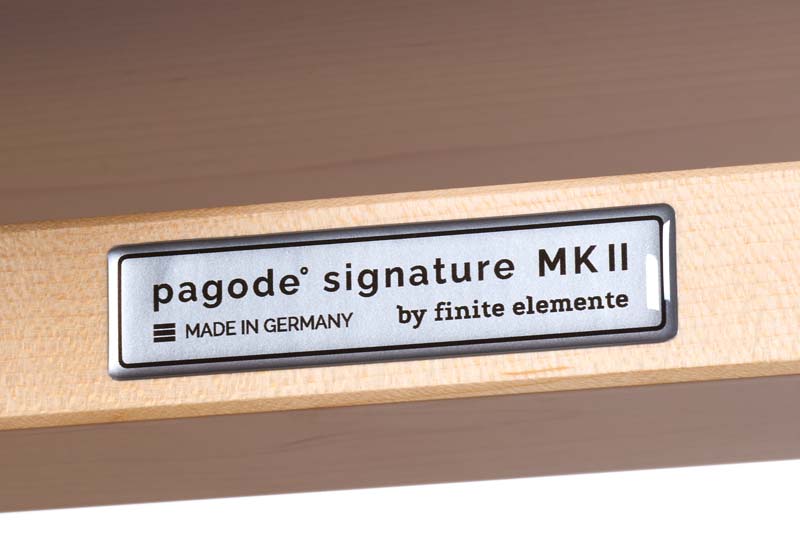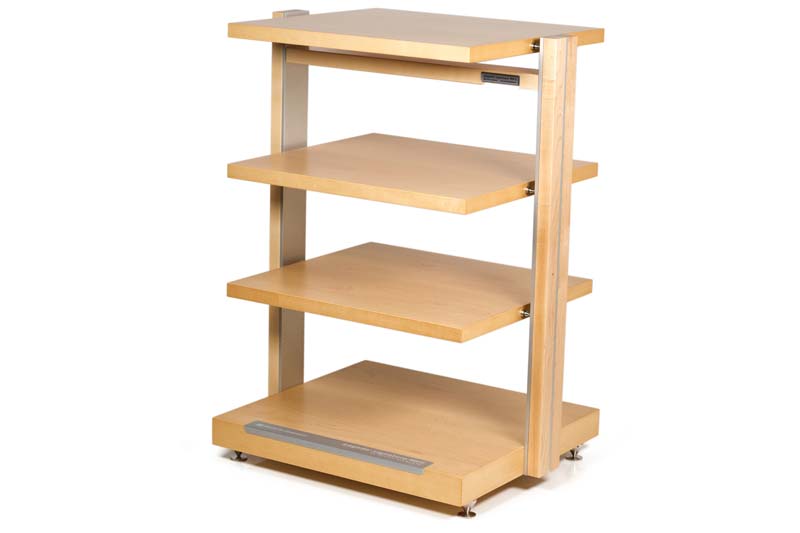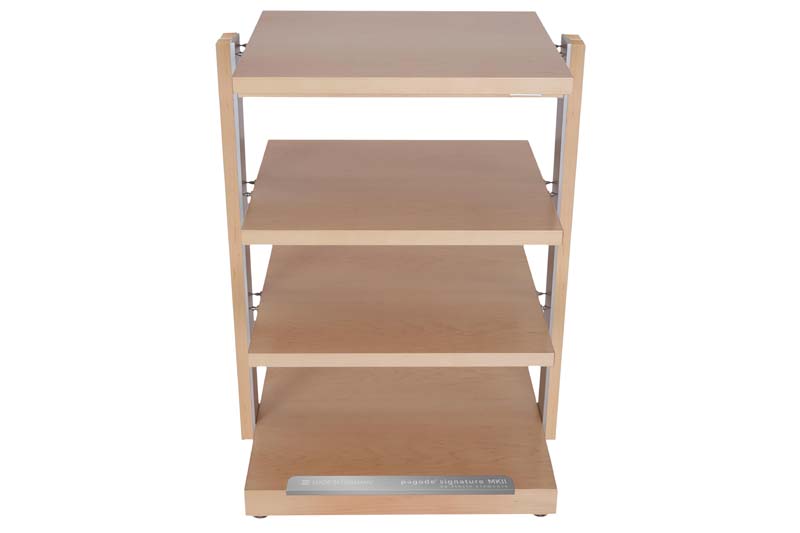The Pareto rule states you can get 80 percent of the results with 20 percent of the effort. Finite Elemente shows what can be done with 30 percent.
Sometimes I can understand how we’re often regarded as freaks by outsiders. The other day, I found myself discussing how the sound of a component can improve if set up on a bamboo cutting board from Ikea. And then how the benefit is lost if you paint the cutting board. It all makes sense: since sound is simply air excited by vibrations, and if you can tame unwanted vibrations, then sound improvements logically follow. But I dare you to explain that to your non-audiophile buddy—and watch their facial expressions as you do.
Now ask yourself: can’t you just buy a good system, set it up and be happy? Is it absolutely necessary to eliminate all potential sources of signal degradation down to the last iota before you can truly enjoy the music? The simple answer: of course not! However, anyone who invests a considerable portion of their disposable income in hi-fi equipment will leave as little as possible to chance regarding sound quality. Therefore, the counter question arises: Do you want to buy your dream system and then just leave out sound quality by simply putting everything on the sideboard? For many of us, the simple answer here is just the same: Of course not!
Even if a lucky bamboo shingle is noticeably better than nothing, this audiophile life hack is hardly the last word on the subject—neither visually nor sonically. And so the next natural step takes the form of a proper rack. Finite Elemente has some truly compelling solutions in its program, such as the Edition Mk II. However, these are aimed at buyers who are a few steps further along their audiophile journey. The manufacturer’s top models are not only extremely effective, but also extremely elaborately manufactured and thus unfortunately also extremely expensive. This is exactly why Finite Elemente offers the Pagode Signature, which was recently upgraded to the MkII variant. It unmistakably resembles its larger siblings, yet at a price that is markedly better suited for wider audiences. And that’s particularly interesting, because the law of diminishing returns—often responsible for the occasionally astronomical prices in the high-end sector—looks much more encouraging when viewed from above. If the developers strike true, then the merits of the top models should at least be approximately transferable to significantly lower price points.
Losing weight the smart way
The trick is saving money in the right places. The intricate frame construction with inserted shelves supported by ceramic ball bolts had to go, and with it disappeared the Resonator technology. This selectively picks up individual resonant frequencies and vanishes them into heat and thin air. Both technologies, while extremely effective, live comfortably in a cost-no-object scenario. Yet their absence is no reason to let the shoulders droop. Even trimmed down, the Pagode rack still has a lot to offer. What remains is, first of all, the tried-and-tested basic construction, in which two T-shaped aluminum profiles are held together between the floor level and a crossbar running beneath the uppermost level. They bear the load of the individual levels, which are directly coupled to the beams via the side-spikes typical for Finite Elemente. And the equipment shelves are designed using proprietary HCCT technology. They consist of thin HDF boards enclosing a honeycomb core, making them light, rigid and low resonance. Only the bottom tier uses an additional, laminated wood center layer to further stabilize the structure.
The construction is designed to combine low mass with high stiffness to store very little vibration energy and then dissipate what is left quickly and effectively. This also affects the choice of wood: Canadian maple is generally used here, as it favors dissipation rather than damping in addition to high sustain. The choice of veneer could therefore be seen as fairly deceptive, because the different tones are achieved through staining, and the material does not change. Although I see no reason to complain here, as the operation ultimately serves the best possible sound.
A bang and a shock
My listening attempts begin with a bang: before the first guitar string is plucked on Rodrigo y Gabriela’s “Tamacun” (Rodrigo Y Gabriela), the listener’s attention is called with a dry and woody beat mixed into the room with a moderately pronounced reverb tail. Now, I don’t want to be misunderstood—I’m not the type to obsessively listen to individual sounds and forget the music as a whole. But it is always amazing just how much a single sound event can say about the sonic character of a component. In addition to the Finite Elemente Pagode Signature Mk II, a very similarly priced rack from another manufacturer and—as I always do for rack tests—the tried and tested carpeted floor were utilized as test subjects. An Audio Note CD 3.1x wanders between these three bases. Each time, the bang at the start hits so differently that I have to pause briefly and process what I’ve heard. As expected, both racks leave the carpet far behind (it would be sad if they didn’t), and settle it among themselves. The beat bursts into the listening room wonderfully abruptly, perhaps with a bit more oomph via the competitor rack. Yet the Finite Elemente renders the wood texture more beautifully in return, and traces the reverb trail more delicately and naturally.
As the piece progresses, a similar picture emerges; “transparent” and “light on its feet” are the terms that come to mind about the Finite Elemente Pagode Signature MkII. It retains more fine-detail information than its opponent, which counterattacks with grunt in the lower registers without sacrificing clarity, but ultimately cannot prevail. Bass and fundamental tone are fully present in the Finite Elemente. And, to confirm this impression, I put in Holly Cole’s Shade and select “Lazy Afternoon”. The double bass pronounces properly rich and gnarly, Holly Cole’s voice, although mixed quite fat, stands perfectly locked in between the speakers. The chain follows the attack of the strings without a hint of inertia and impeccably traces their gradual decay as well as the harmonics. I had already noticed the expressive overtone spectrum on “Tamacun,” as well as the snappy rhythmic sense. Sonically, the Signature Mk II really doesn’t give up much compared to its bigger brothers, and at a price point that’s classes below. At this price, the sonic performance offered here should be hard to top.
Rack
Finite Elemente Pagode Signature MkII
Concept: low-mass rack that favors dissipation over damping | Construction: resonance-damped component shelves with HCCT honeycomb core, T-shaped aluminum support profiles, stainless steel floor cones with integrated spike plates | Versions: 5 heights from 45 cm to 110 cm, 2 to 5 levels; also available as amp stand | Usable area (W x D): lowest level 59 x 54 cm, upper levels 55 x 50 cm, amp stand 59 x 54 cm (optionally lengthwise or crosswise) | Maximum load: lowest level 75 kg, upper levels 25 kg, amp stand 75 kg | Versions: Canadian maple in natural, walnut, macassar, rosewood, cherry, pearl white and pearl black color variants; side profiles and logo bar aluminum matt anodized, high-gloss polished on request (surcharge) | Special features: Cone feet compatible with Cera Interface | Dimensions (W/H/D): 66/85/54 cm | Warranty period: 2 years (5 years if registered) | Price: from approx. 3300 €, test model around 5500 €; additional level 960 €; amp stand around 1500 €
Finite Elemente GmbH
Am Heimekesberg 11
33106 Paderborn
Germany
Phone +49 5254 64557
info@finite-elemente.eu

